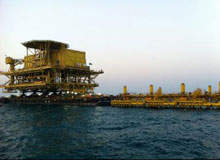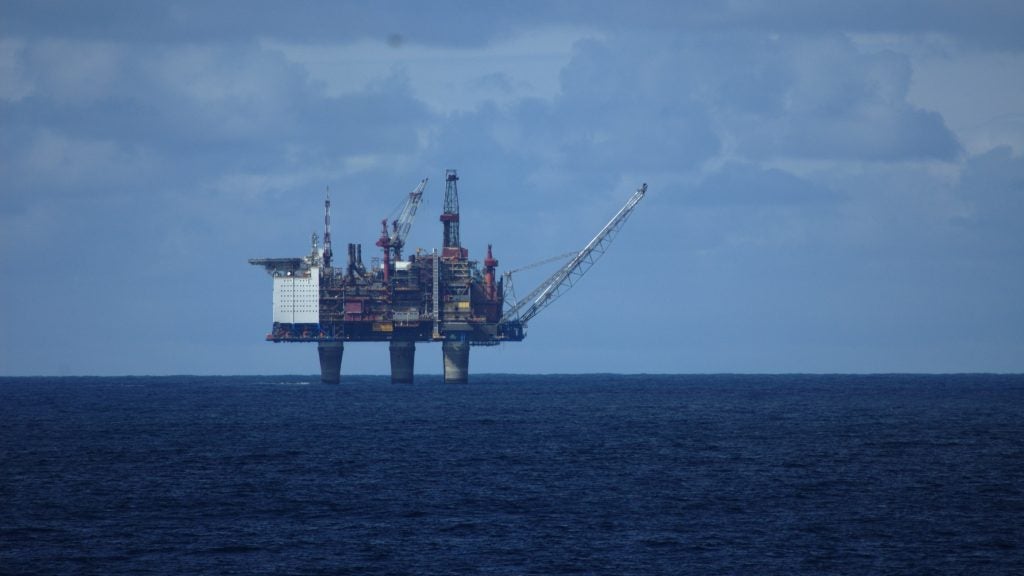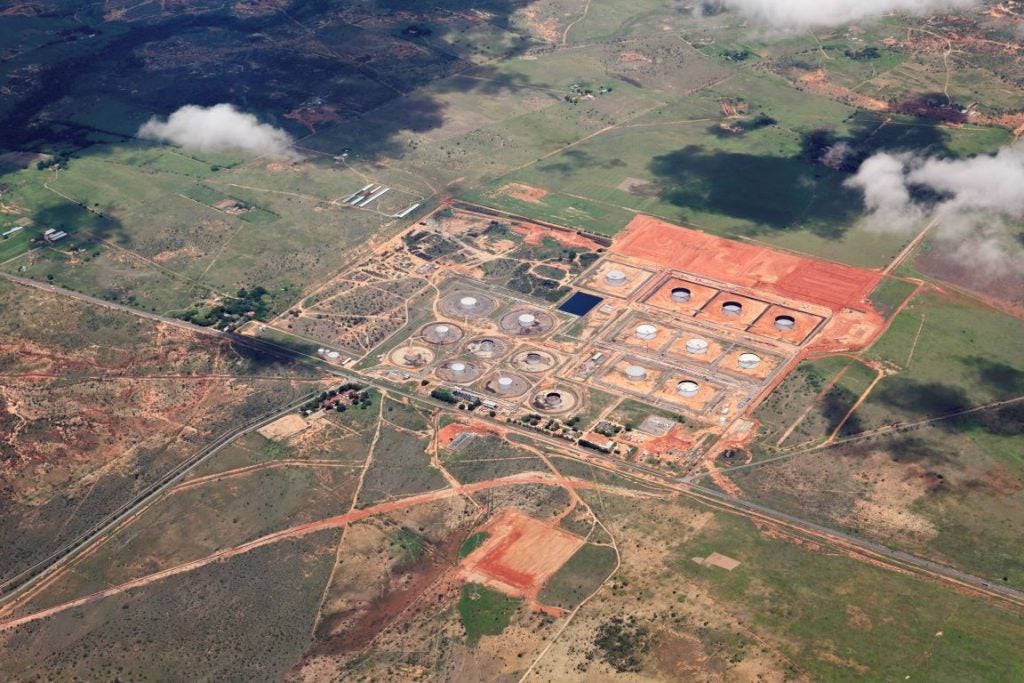

Saudi Arabia
Saudi Arabia, with total oil production of over 11.7 million barrels per day (mbd) in 2012, is the world’s biggest oil producing country. The country’s crude oil production, at 9.83 million barrels per day (mbd) during the year, does however rank second after Russia.
Saudi Arabia holds the world’s second biggest proven oil reserves, estimated at 267.9 billion barrels (bbl) as of 2013, with more than half of it contained in just eight of about 100 major oil and gas fields in the country. The onshore Gawhar field, with 70bbl of estimated remaining oil reserves and a production capacity of 5mbd, is the world’s biggest oil field both by reserves and production. The country also hosts Safaniya, the world’s biggest offshore oil field containing 36bbl of recoverable oil reserves and a production capacity of 1.5mbd.
Khurais, Manifa, and Qatif are among the other major oil producing fields in Saudi Arabia. In addition to crude oil, the country produced 1.8mbd of natural gas liquids (NGL) in 2012. Saudi Arabia’s net oil exports during the year averaged at 8.8mbd making it the world’s largest oil exporter. The country consumed 2.86mbd of oil and had 2.12mbd of refinery capacity, which is the world’s sixth largest.
United States of America
The United States produced over 11.1mbd of oil during 2012 becoming the world’s second biggest oil producing country. The country is expected to surpass Saudi Arabia in total oil production in the near future by increasing output from its shale reservoirs. US crude oil production at 8.48mbd in 2012 was the third biggest after Saudi Arabia and Russia.
The US held 26.54bbl of proven oil reserves by 2013 estimates. The Permian Basin and Eagle Ford in Texas and the Bakken in North Dakota account for the majority of USA’s oil resources. Oklahoma, California, Colorado, and Louisiana are the fastest growing oil producing states in the US, after North Dakota and Texas. The BP-operated Prudhoe Bay field in Alaska, the Spraberry field in West Texas, and the Thunder Horse and Mars-Ursa offshore fields in the Mississippi Canyon in Gulf of Mexico are among the largest oil producing fields in the US.
How well do you really know your competitors?
Access the most comprehensive Company Profiles on the market, powered by GlobalData. Save hours of research. Gain competitive edge.

Thank you!
Your download email will arrive shortly
Not ready to buy yet? Download a free sample
We are confident about the unique quality of our Company Profiles. However, we want you to make the most beneficial decision for your business, so we offer a free sample that you can download by submitting the below form
By GlobalDataThe US consumed 18.5mbd of oil in 2012 and remained the biggest oil consuming country in the world. It was the world’s largest oil importing country before China marginally surpassed it in oil imports volume in the fourth quarter of 2013. The US is also the biggest oil refining country in the world with its refinery capacity at 17.38mbd in 2013, accounting for about 18.8% of the world’s total refinery capacity.
Russia
Russia, with a total oil output of 10.39mbd from 320 active rigs in 2012, is the third biggest oil producing country in the world. The country’s crude oil production during the year averaged at 9.92mbd, which was the second biggest after that of the US.
Russia’s estimated proven oil reserves of 80bbl at the beginning of 2013 are considered to be the world’s eighth biggest. The West Siberia region hosting large oil fields such as North Priobskoye, Samotlor, Mamontovskoye and Salymskoye account for about 60% of Russia’s total oil production. Urals-Volga, which houses the giant oil field Romashkinskoye, is the second biggest oil producing region in Russia. East Siberia, Yamal Peninsula, North Caucasus, Timan-Pechora and Barents Sea, and the Sakhalin Island off the coast of eastern Russia are the other major oil producing regions.
With 3.2mbd of oil consumption in 2012, Russia is the fifth biggest oil consuming country. Oil exports from Russia reached 7.2mbd during the year making it the second biggest oil exporter after Saudi Arabia. Russia boasts the third biggest refinery capacity in the world. It refined 5.75mbd of oil in 2012 with 40 active refineries.
China
At 4.37mbd of total oil output in 2012, China is the world’s fourth biggest oil producing country and the biggest in Asia Pacific. China produced 4.08mbd of crude oil during the year.
The estimated proven oil reserves in China as of 2013 were 25.58bbl. Most of China’s biggest oil fields are located in the northeast and north central regions of the country. The CNPC’s Daqing field located in Northeast China is the biggest oil field contributing about 19% of the country’s overall oil production. The Sinopec-operated Shengli field in the north of Shandong province bordering the Bohai Sea, and the Changqing field located in the north central Ordos basin are respectively the second and third biggest oil producing fields in the country. Bohai Bay Basin in north-eastern China is the major oil-producing offshore zone in the country.
The world’s most populous country and the second biggest oil consuming country, consumed 10.7mbd of oil in 2013. The country, which was the second biggest oil importing country since 2009, became the biggest net oil importer surpassing the US in September 2013. The Middle East is the largest source of China’s crude oil imports. China also boasts the second biggest refinery capacity (11.54mbd in 2012) in the world.
Canada
Canada became the fifth biggest oil producer with total oil output of 3.85mbd during 2012. Crude oil production of 3.13mbd during the year, however, was the sixth biggest after Russia, Saudi Arabia, USA, China, and Iran.
Canada’s proven oil reserves, estimated at 173bbl as of 2013, are the world’s third biggest after Venezuela and Saudi Arabia. More than 90% of the country’s oil reserves are concentrated in the oil sands deposits, especially in Alberta. Western Canada Sedimentary Basin (WCSB) and the Jeanne d’Arc Basin off the eastern coast of Newfoundland and Labrador are the principal sources of conventional oil production in the country. The Hibernia, Terra Nova, White Rose and Hebron oil fields are among the major offshore oil fields in Canada.
Canada, which consumed about 2.28mbd of oil in 2012, is the world’s tenth biggest oil consumer. The country exported 1.57mbd of oil during the year becoming the 11th biggest net oil exporter. Most of Canada’s crude oil exports head to refineries in the US. Canada’s refinery capacity of 2.06mbd with 17 operational refineries at the end of 2012 made it the world’s tenth biggest oil refining country.
Iran
Iran’s total oil production decreased from 4.26mbd in 2011 to 3.86mbd in 2012 making it the sixth biggest oil producing country in the world. With an estimated 3.36mbd of crude oil production, it was the world’s fifth biggest crude oil producer during the year.
The second biggest oil producing Middle East country, possessed 157bbl of proven oil reserves as of 2013 making it the world’s fourth biggest. The country operates 34 oil producing fields including 22 onshore fields that account for more than 70% of its oil reserves. Ahwaz-Asmari, Marun, Gachsaran, and Aghajari are among the largest producing onshore oil fields in the country. Major offshore oil fields in Iran include Bahregansar, Balal, Alvand, Hengam, and Reshadat.
The country consumed an estimated 1.7mbd of oil in 2012 becoming the 13th biggest oil consumer in the world. Its oil exports dropped from 2.56mbd in 2011 to 1.88mbd in 2012 making it the seventh biggest net oil exporter in the world. The decline in oil exports was the result of tightening sanctions by the United States and the European Union. Iran’s refinery capacity at 1.45mbd during 2012 was the world’s 15th biggest.
United Arab Emirates
The United Arab Emirates (UAE), which produced 3.2mbd of oil in 2012, was the world’s seventh biggest oil producer. The country’s crude oil production during the year at 2.8mbd was eighth biggest in the world. UAE is also the third biggest oil producing country in the Middle East.
The country held the world’s seventh biggest proven oil reserves estimated at 97.8bbl as of 2013. Zakum oil deposit located offshore of Abu Dhabi is the largest oil reservoir in UAE. The ZADCO-operated Upper Zakum oil field, containing 21bbl of recoverable reserves, is the second biggest offshore oil field in the world. Lower Zakum, Ghasha-Butini, Nasr, Umm Lulu and Umm Shaif are the other major offshore fields in the country.
UAE consumed about 618,000 barrels of oil per day in 2012 and exported 2.59mbd of oil in the year becoming the third biggest net oil exporter in the world, after Saudi Arabia and Russia. The country’s refinery capacity during 2012 stood at 773,000 barrels per day.
Iraq
At 2.98mbd of oil output in 2012, Iraq is the eighth biggest oil producing country in the world and the fourth biggest in the Middle East.
Iraq’s proven oil reserves were estimated at 140bbl in 2013 making it the fifth biggest in the world and the third biggest in the Middle East. The country’s oil reserves are mostly concentrated in Shiite areas of southern Iraq and the Kurdish region in northern Iraq. Kirkuk, Rumaila, West Qurna, Manjoon, Az Zubair, Halfaya, Garraf, and Badra are the major oil producing fields in Iraq.
The country consumed around 751,000 barrels of oil per day in 2012 and exported 2.23mbd of oil during the year becoming the sixth biggest net oil exporter in the world and the fourth biggest oil exporter in the Middle East after Saudi Arabia, UAE and Kuwait. Iraq’s refinery capacity during the year stood at 638,000 barrels per day.
Mexico
Mexico, which produced 2.93mbd of oil in 2012, is the ninth biggest oil producer in the world and the fifth biggest oil producing country outside Middle East, after the US, Russia, China and Canada. Mexico’s crude oil production at 2.59mbd during the year, however, ranked as the world’s 10th biggest.
Mexico possessed 10.36bbl of proven oil reserves as of 2013, with most of the country’s oil reserves concentrated in the Campeche Basin located offshore in the southern part of Mexico. Ku-Maloob-Zaap (KMZ) and Cantarell are the biggest offshore oil fields contributing over half of Mexico’s oil production. The onshore fields account for just one quarter of Mexico’s total crude oil production. Samaria-Luna and Chicontepec are among the biggest oil producing onshore fields in the country.
Mexico consumed 2.14mbd of oil in 2012 becoming the 11th biggest oil producing country in the world. It exported 791,000 barrels of oil per day during the year with more than 80% of the country’s oil exports going to the United States. Mexico had a refinery capacity of 1.5mbd in 2012 making it the world’s 14th biggest.
Kuwait
Kuwait stood as the world’s tenth biggest oil producer with 2.79mbd of total oil output in 2012. The country’s crude oil production at 2.63mb during the year was the ninth biggest in the world. Kuwait is the fifth biggest oil producer in the Middle East, after Saudi Arabia, Iran, UAE and Iraq.
Kuwait holds the world’s sixth biggest proven oil reserves, estimated at 104bbl as of 2013. The Greater Burgan oil field, comprised of the Burgan, Magwa and Ahmadi reservoirs in the south-eastern Kuwait, is the country’s biggest oil field both by reserves and production. Other major oil producing fields in the country include Raudhatain and the Sabriya and al-Ratqa oil fields located in Northern Kuwait, and the Umm Gudair, Minagish and Abduliyah oil fields in Southern Kuwait.
The country consumed 383,000 barrels oil per day and exported 2.4mbd of oil in 2012. Kuwait is the world’s fourth biggest net oil exporter after Saudi Arabia, Russia, and UAE. The country’s refinery capacity in 2012 stood at 936,000 barrels per day.







